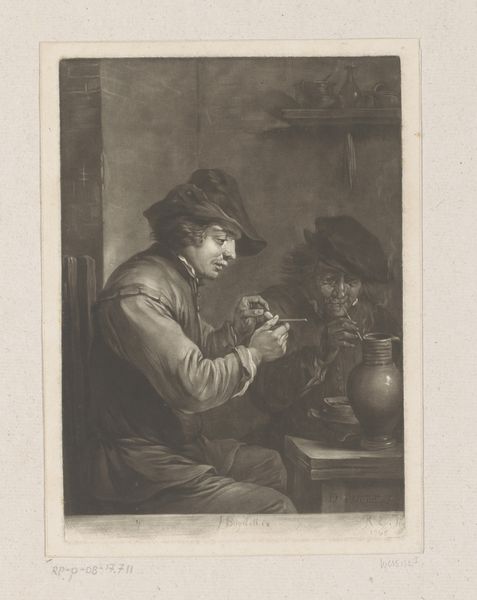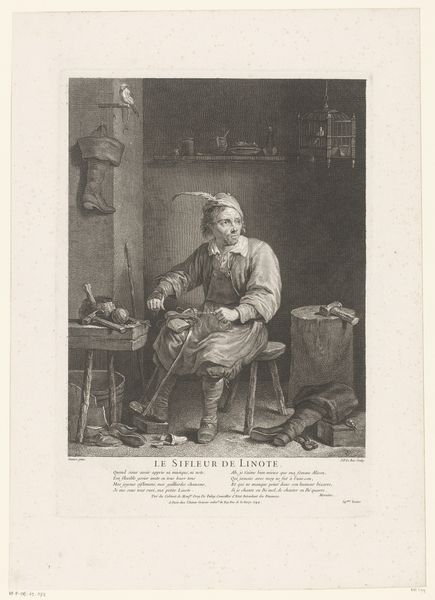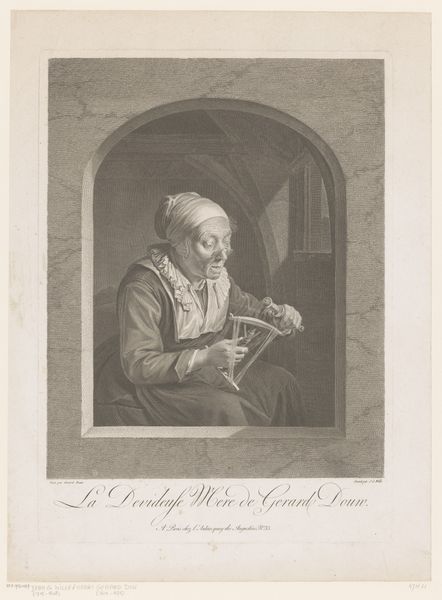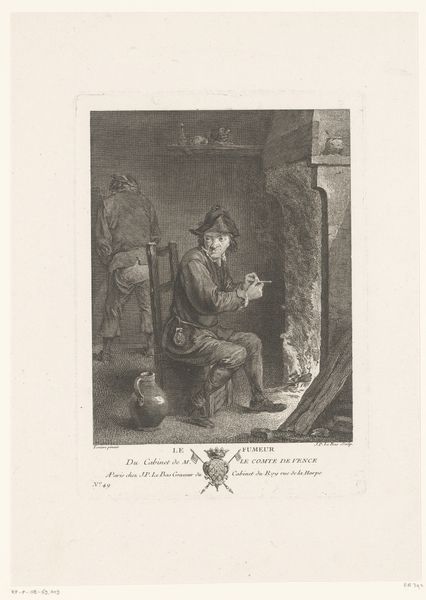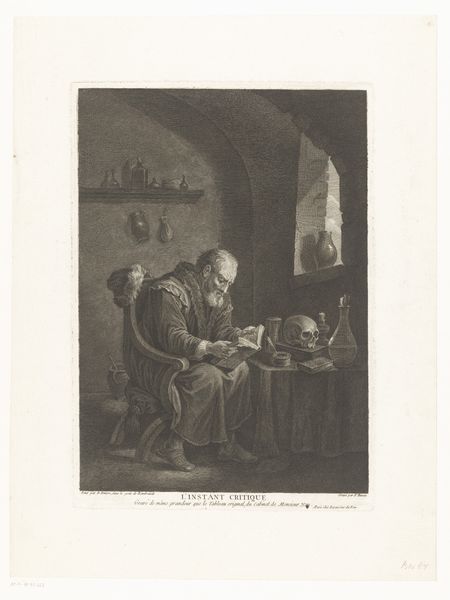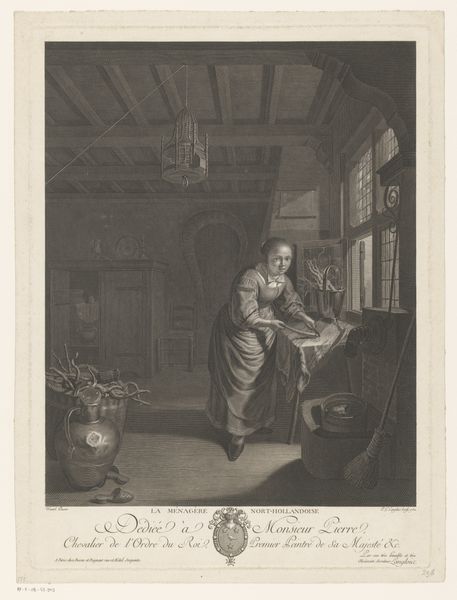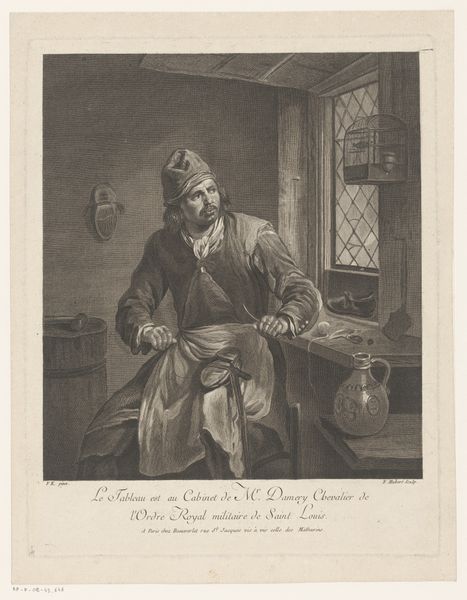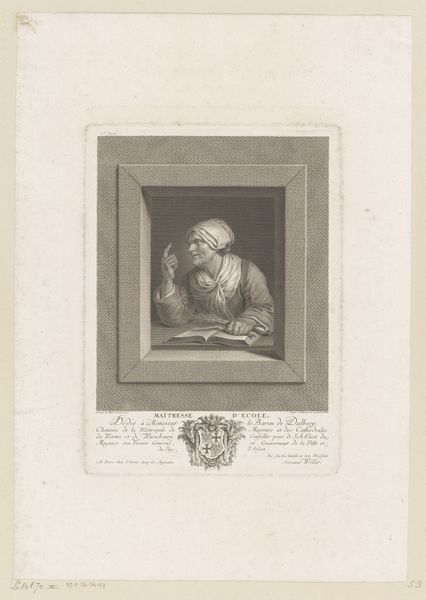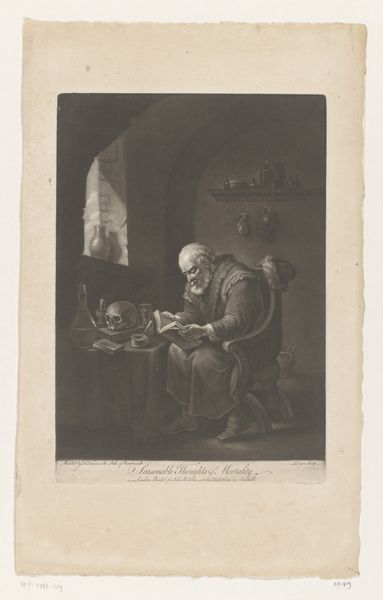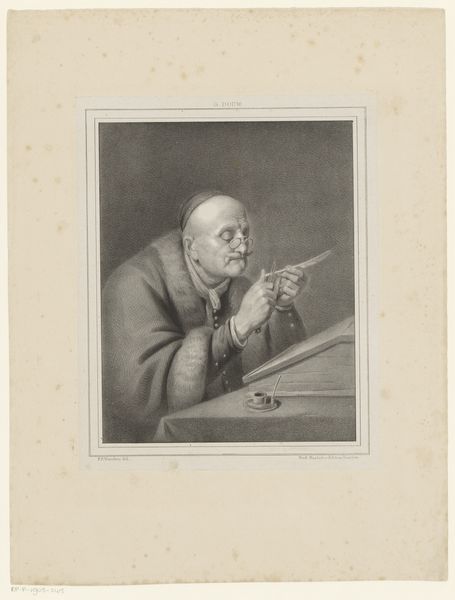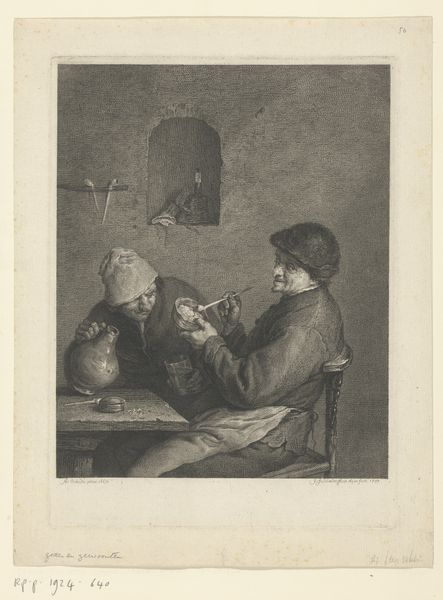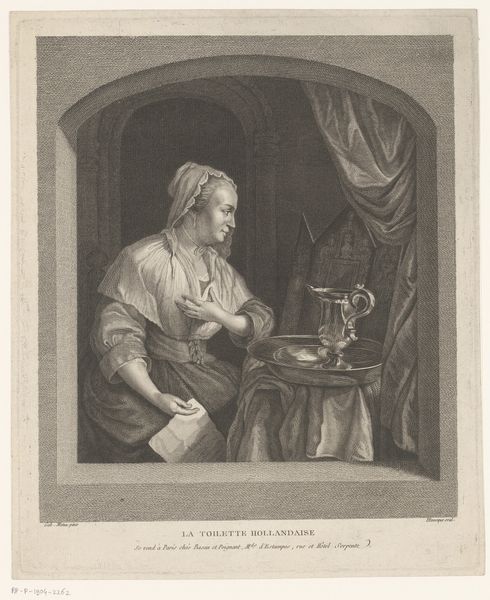
Dimensions: height 435 mm, width 245 mm
Copyright: Rijks Museum: Open Domain
Editor: Here we have Pierre Laurent Auvray's "Portret van Johann Balthasar Burckhardt" from 1767, created using engraving. I find the composition really striking. The sitter looks so pensive. How do you interpret this work, thinking about its time? Curator: Well, beyond its Baroque elegance, I see a powerful statement about the era's shifting social dynamics. Notice his attire and the setting, which suggest status and intellectual pursuit, hallmarks of the rising merchant class in the 18th century. Editor: Yes, but what is he actually *doing*? He's caught between thought and action, with his hand frozen mid-stroke. What’s the message there? Curator: I see that ambiguity as intentional. Auvray captures the tension inherent in a society grappling with Enlightenment ideals and lingering aristocratic norms. Is Burckhardt merely documenting, or is he actively shaping narratives that could challenge existing power structures? Consider how this image might have been perceived by different audiences. Who was this work meant to impress and why? Editor: That makes me consider how the proliferation of images through engravings also democratized representation. It wasn’t just about powerful elites any more. Curator: Precisely! Engravings facilitated wider dissemination of ideas and likenesses, contributing to the construction and reinforcement of new social identities, as well as new opportunities for marginalized communities. This democratization of representation played a key role in various revolutionary movements. Editor: I hadn't really considered how the medium itself could be interpreted through a socio-political lens! Thanks for drawing attention to that! Curator: Of course. And it’s worth considering that what seems straightforward at first can contain layered meanings that connect to much wider, more profound shifts in the history of power, identity and representation.
Comments
No comments
Be the first to comment and join the conversation on the ultimate creative platform.
